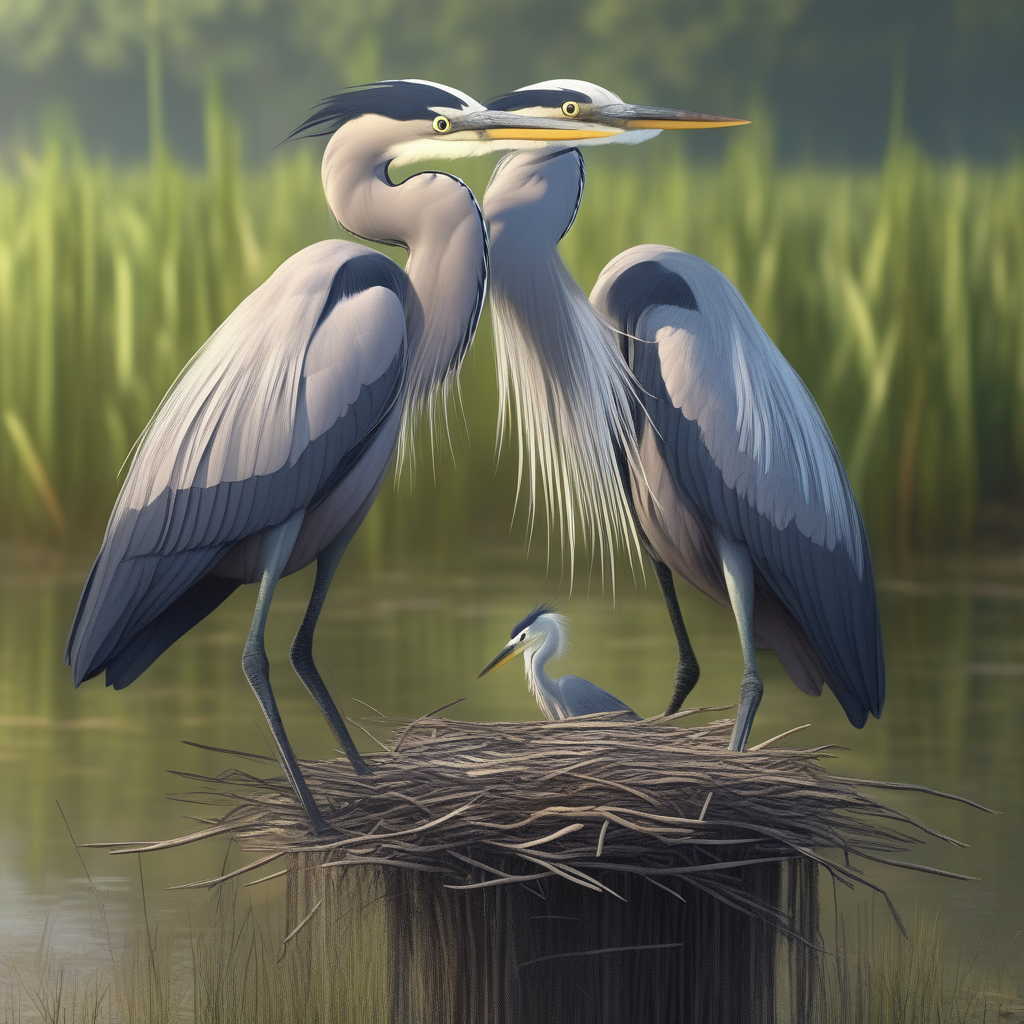Heronries are large colonies of nesting herons that can be found in various wetland habitats around the world. These colonies can range in size from just a few nests to several hundred, with some of the largest heronries containing thousands of nesting pairs.
Heronries are typically located in tall trees near bodies of water, such as lakes, rivers, or marshes. This proximity to water is essential for herons, as they rely on aquatic prey like fish, frogs, and insects for their survival. The tall trees also provide protection from predators and help to keep the nests safe from flooding.
During the breeding season, herons gather in these colonies to build their nests, lay their eggs, and raise their young. The colonies can be quite noisy and chaotic, with birds coming and going constantly as they hunt for food and care for their offspring. Despite the hustle and bustle, heronries are important sites for conservation efforts, as they provide crucial habitat for a variety of bird species and other wildlife.
Overall, heronries are fascinating and important ecosystems that play a vital role in the health of wetland habitats. By protecting these colonies and the surrounding environments, we can ensure the continued survival of these majestic birds and the many other species that call heronries home.
